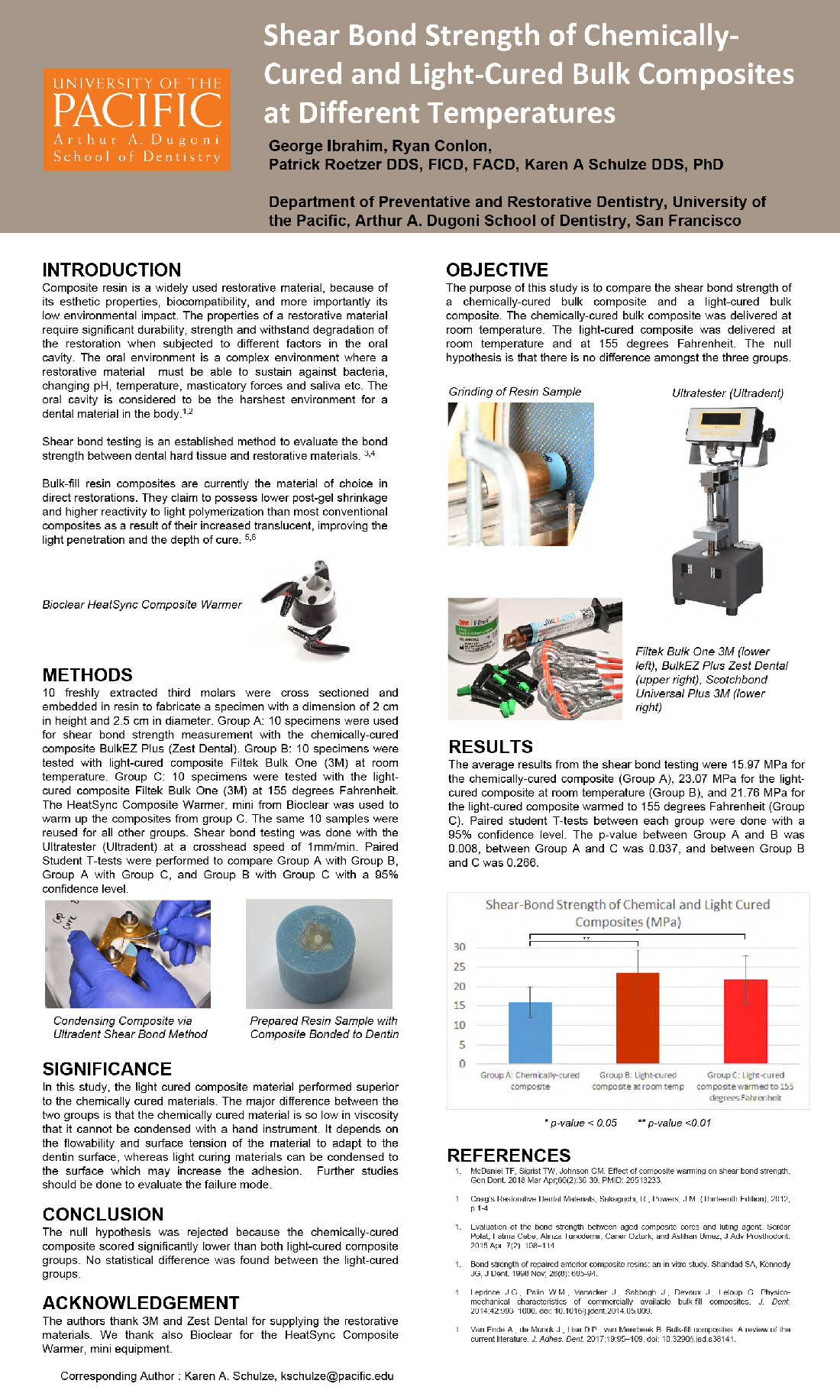Shear Bond Strength of Chemically-Cured and Light-Cured Bulk Composites at Different Temperatures
Objectives: The purpose of this study is to compare the shear-bond strength of a chemically-cured bulk composite and a light-cured bulk composite. The chemically-cured bulk composite was delivered at room temperature. The light-cured composite was delivered at room temperature and at 155 degrees Fahrenheit. The null hypothesis is that there is no difference among the three groups.
Methods: 10 freshly extracted third molars were cross sectioned and embedded in resin to fabricate a specimen with a dimension of 2cm in height and 2.5cm in diameter. Group A: 10 specimens were used for shear bond strength measurement with the chemically-cured composite Bulk Easy +(Danville). Group B: 10 specimens were tested with light-cured composite Filtek Bulk One(3M) at room temperature. Group C: 10 specimens were tested with the light-cured composite Filtek Bulk One(3M) at 155-degrees Fahrenheit. The same 10 samples were reused for all groups. Shear bond testing was done with the Unitester(Ultradent) at a crosshead speed of 1 mm/min. Paired Student T-tests were performed to compare Group A with Group B, Group A with Group C and Group B with Group C with a 95% confidence level.
Results: The average results from the shear bond testing were 15.97 MPa for the chemically-cured composite(Group A), 23.07 MPa for the light-cured composite at room temperature(Group B), and 21.76 MPa for the light-cured composite warmed to 155 degrees Fahrenheit(Group C). Paired student T-tests between each group were done with a 95% confidence level. The p-value between Group A and B was 0.008, between Group A and C was 0.037, and between Group B and C was 0.266.
Conclusions: The chemically-cured composite has significantly lower shear-bond strength than both light-cured composite groups. No statistical difference was found between the light-cured groups.
Acknowledgements: We thank 3M, Zest Dental, and Bioclear for the materials used

